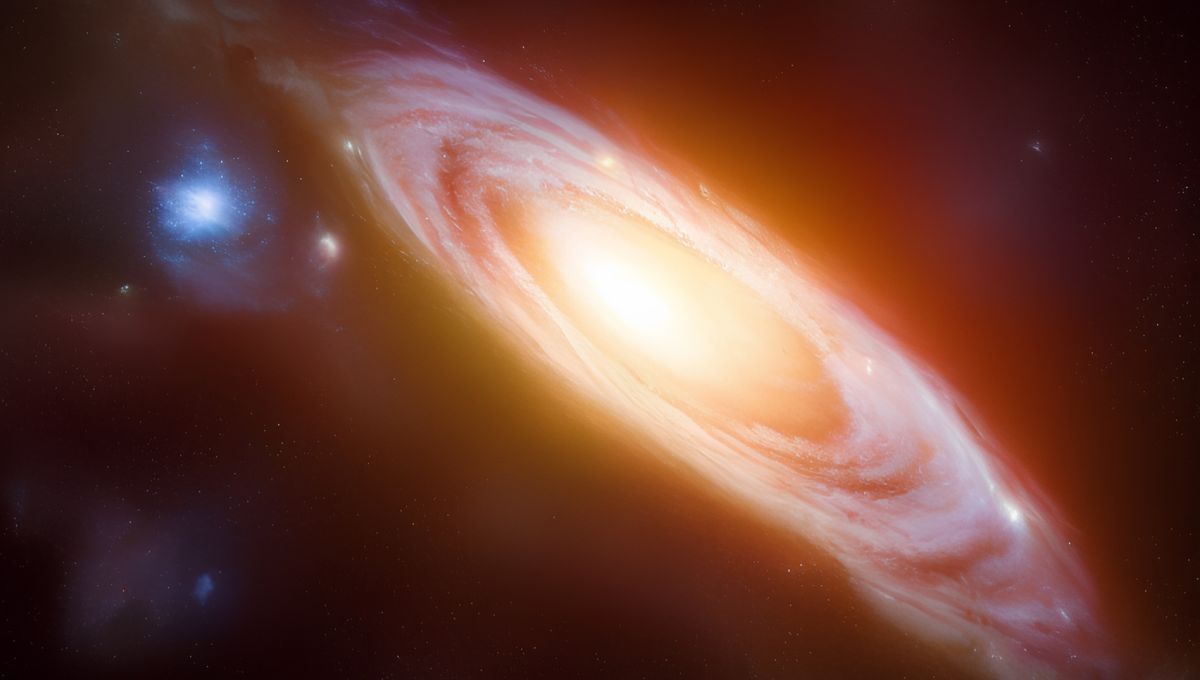
Astronomers have reported the detection of what is believed to be the oldest supermassive black hole in the Universe. The object is located in a galaxy whose light is reaching us from when the universe was just 570 million years old. The observations were possible thanks to the latest major space observatory JWST and the fact that the black hole is in a feeding frenzy which makes it an Active Galactic Nucleus (AGN).
The supermassive black hole is estimated to be around 10 million times the mass of the Sun. As far as supermassive black holes go, it’s not really big at over twice the mass of Sagittarius A*, the one at the center of the Milky Way – and it is peanuts compared to some of the colossal objects that astronomers have found lately. But considering how young the cosmos was at the time, it is an enormous object.
Its galaxy is very small comparatively. It has a mass of around 3 billion times that of the Sun. That is about half what the Small Magellanic Cloud – one of the galactic companions of the Milky Way – weighs. So how did such a big black hole form so quickly? Two hypotheses have been put forward to explain how black holes can get so big so fast.
The first idea is that they come from the explosion of the first population of stars. These stars were made of hydrogen and helium with virtually no other elements – the other elements are just a sprinkle. Even for the Sun, these amount to just two percent of the mass, a value called metallicity. They are important though: They help the gas in stellar nurseries to cool down and condense in a small volume. There, under the force of gravity, it can collapse into a star.
Without these elements, a bigger threshold of gas is needed to collapse and eventually form them, so this first generation of stars were huge. They were also very hot. They evolved and then exploded very quickly, spreading some of the heavier elements they created, but not too many. This galaxy has about 10 percent of the metallicity of the Sun. Multiple black holes from these stars have to merge to form such supermassive black holes.
The other option is called a direct collapse black hole. Instead of coming from stars, they are formed from very large gas clouds that can’t fragment into stars like in the above scenario, so the gas keeps contracting until it collapses under its own weight directly into a star. Based on this observation alone, there’s no clear indication as to what scenario best explains it.
The observations from JWST also suggest that the galaxy is getting more and more stars, roughly at a rate of 30 new Sun-like stars per year. That is a large rate of star formation, quite uncommon in the universe today.
“We’re just starting to get a glimpse into the early Universe, where galaxies and AGN aren’t two distinct populations but rather growing together,” lead author Dr Rebecca Larson wrote in a Twitter thread discussing the paper.
The paper was submitted to The Astrophysical Journal hole and it is waiting for peer review. It can be read on the paper repository ArXiv.
Source Link: JWST Spots Furthest Known Supermassive Black Hole And It's A Whopper